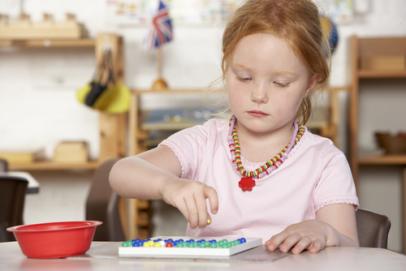 By: Elizabeth Kelsey, Kendall Hunt RPD Intern, with contributions from the writing team of Pathways 2.0, ByDesign Science, and Kindergarten Stepping Stones
By: Elizabeth Kelsey, Kendall Hunt RPD Intern, with contributions from the writing team of Pathways 2.0, ByDesign Science, and Kindergarten Stepping Stones
Have you heard of the Reggio Emilia approach to education?
This hands-on, student-directed style of learning emerged in a small Italian town in the aftermath of WWII. Today, Reggio Emilia classrooms are becoming more popular, and although Kendall Hunt Religious Publishing Division (RPD) programs aren’t explicitly developed in the Reggio Emilia style, our custom curricula have a lot in common with this innovative approach. Check out these features of the Reggio Emilia method, and see how our programs incorporate them.
Reggio Emilia …
Based on children’s natural curiosity, teachers guide students in projects that extend their learning and critical thinking skills. This inquiry-based philosophy is found in all Kendall Hunt RPD programs, especially ByDesign Science. In the Reggio Emilia approach, however, projects are part of an “emergent curriculum”: one that’s designed minute by minute rather than days in advance.
“I don’t really know what we’re going to do tomorrow, or the next day,” said Sarah Lotter, a Reggio Emilia preschool teacher. “But I know where their interests might take us. I have to think, what can I bring to the table tomorrow that might enhance that?”
Our curriculum does include planning guides, such as our Daily Lesson Guides for Pathways 2.0. But our careful planning is what allows you to follow an emergent curriculum with your students. We incorporate multiple activities and extensions, such as additional science inquiries and further literature connections, which can be adapted based on your learners’ interests. Our precisely planned curriculum, designed by educational experts, does the work for you and is flexible for your traditional or nontraditional classroom.
Reggio Emilia educators view children as competent and full of potential. “We foster their interest and their voice and make them feel that they are powerful, no matter how old they are,” said Sapna Vats, an educator at Wooranna Park Primary School, a Reggio Emilia–inspired school in Australia.
Rather than imparting knowledge to blank-slate students, Lotter said, teachers ask, “What do [students] know, and what materials can we give them to make them build upon that knowledge?”
Our Kindergarten Stepping Stones curriculum affirms that there is no set body of skills required for entry to kindergarten and that all students follow different paths. “Start each child where they are and take them as far as they can go” is the Kindergarten Stepping Stones philosophy.
Because children are viewed as having endless agency, imagination, and potential, student choice in what and how they learn is an integral part of Reggio Emilia. Teachers let children learn through collaboration and interaction, which strengthens problem-solving skills and cooperation in a student-chosen context.
“If it’s fun, if it’s something children want to do, children will pursue it,” said Ray Trotter, principal of Wooranna Park.
Kendall Hunt RPD programs include activities for student choice, such as open inquiries and thought-provoking problems that students solve using their own ideas and ingenuity. These extensions often take place in groups and are student led, as teachers allow students to drive their own learning.
With photos, videos, student portfolios, and dictations, Reggio Emilia teachers keep careful records of students’ interests, progress, and struggles. These documentations help educators consider next steps in the emergent curriculum and allow them to assess students’ needs holistically.
Kendall Hunt RPD programs include many documentation resources, such as the ByDesign Science Journal, where students record sketches, calculations, and other physical representations. These documentations help teachers and students assess progress and plan the child’s next steps.
For Reggio Emilia instructors, the environment is “the third teacher,” and classrooms include hands-on activities to let children learn through play. “We want to create spaces with stimulating materials that a child would want to interact with,” said Vats.
Kindergarten Stepping Stones includes suggestions to help teachers organize interactive classrooms. We offer a list of possible centers (dramatic play, blocks, etc.), as well as possible materials to include in each center and ideas for making kindergarten students comfortable in a new learning environment.
Professor Susan Cress of Indiana University South Bend said that the Reggio Emilia approach “allows children to learn by being curious and being creative and being critical thinkers, and those are all so important as lifelong skills.” Kendall Hunt RPD strives to build these skills into our custom curricula, perfect for any traditional or nontraditional classroom.
What aspects of Reggio Emilia would you like to incorporate into your own classroom?
Sources:
https://www.edutopia.org/article/one-schools-uncompromising-take-student-choice
https://www.scholastic.com/teachers/articles/teaching-content/reggio-emilia-approach/